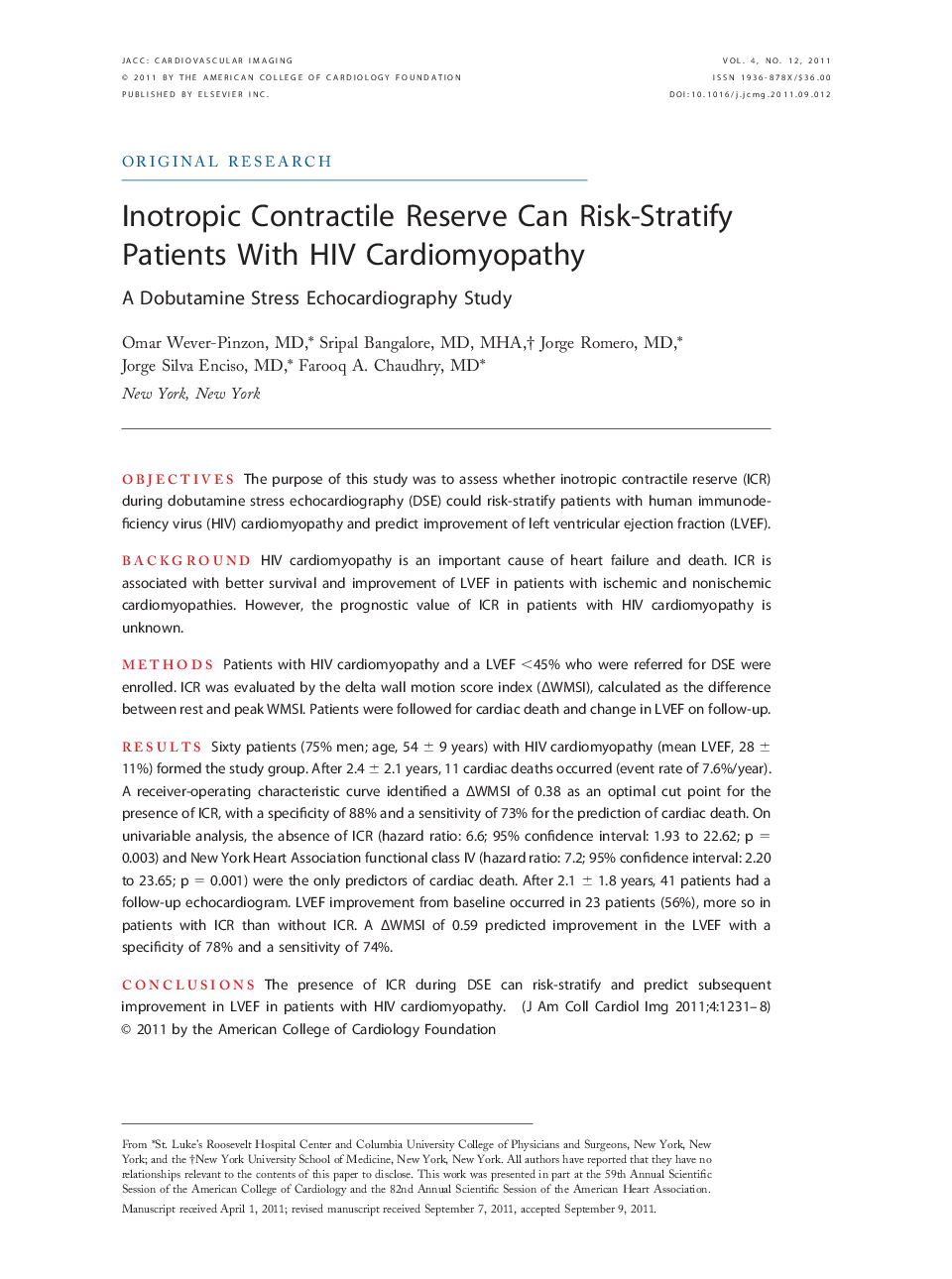| Article ID | Journal | Published Year | Pages | File Type |
|---|---|---|---|---|
| 2938718 | JACC: Cardiovascular Imaging | 2011 | 8 Pages |
ObjectivesThe purpose of this study was to assess whether inotropic contractile reserve (ICR) during dobutamine stress echocardiography (DSE) could risk-stratify patients with human immunodeficiency virus (HIV) cardiomyopathy and predict improvement of left ventricular ejection fraction (LVEF).BackgroundHIV cardiomyopathy is an important cause of heart failure and death. ICR is associated with better survival and improvement of LVEF in patients with ischemic and nonischemic cardiomyopathies. However, the prognostic value of ICR in patients with HIV cardiomyopathy is unknown.MethodsPatients with HIV cardiomyopathy and a LVEF <45% who were referred for DSE were enrolled. ICR was evaluated by the delta wall motion score index (ΔWMSI), calculated as the difference between rest and peak WMSI. Patients were followed for cardiac death and change in LVEF on follow-up.ResultsSixty patients (75% men; age, 54 ± 9 years) with HIV cardiomyopathy (mean LVEF, 28 ± 11%) formed the study group. After 2.4 ± 2.1 years, 11 cardiac deaths occurred (event rate of 7.6%/year). A receiver-operating characteristic curve identified a ΔWMSI of 0.38 as an optimal cut point for the presence of ICR, with a specificity of 88% and a sensitivity of 73% for the prediction of cardiac death. On univariable analysis, the absence of ICR (hazard ratio: 6.6; 95% confidence interval: 1.93 to 22.62; p = 0.003) and New York Heart Association functional class IV (hazard ratio: 7.2; 95% confidence interval: 2.20 to 23.65; p = 0.001) were the only predictors of cardiac death. After 2.1 ± 1.8 years, 41 patients had a follow-up echocardiogram. LVEF improvement from baseline occurred in 23 patients (56%), more so in patients with ICR than without ICR. A ΔWMSI of 0.59 predicted improvement in the LVEF with a specificity of 78% and a sensitivity of 74%.ConclusionsThe presence of ICR during DSE can risk-stratify and predict subsequent improvement in LVEF in patients with HIV cardiomyopathy.
